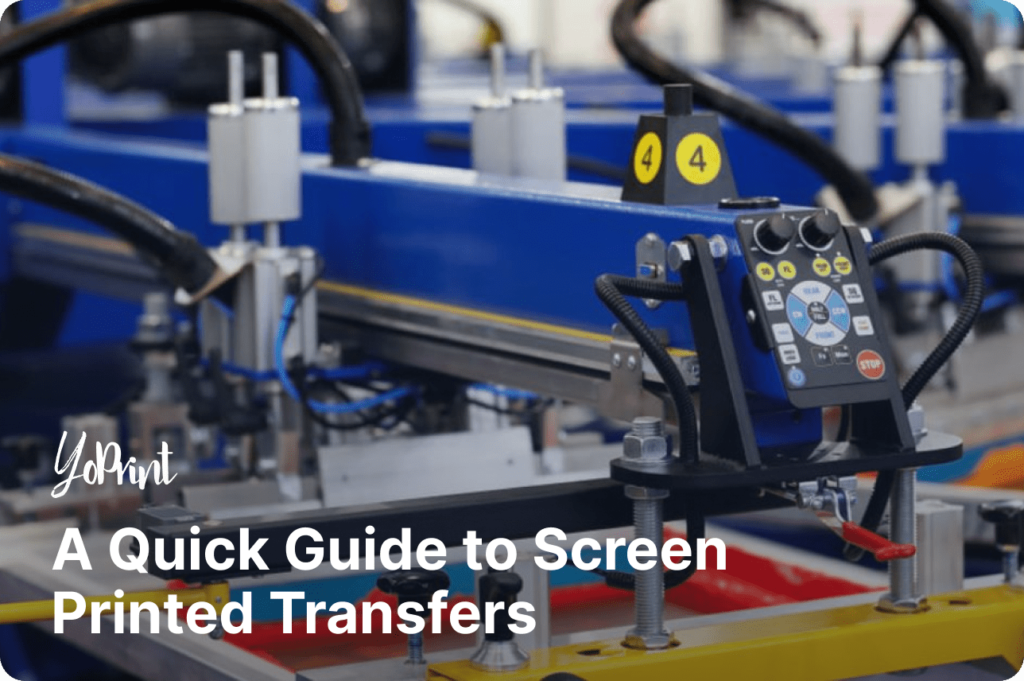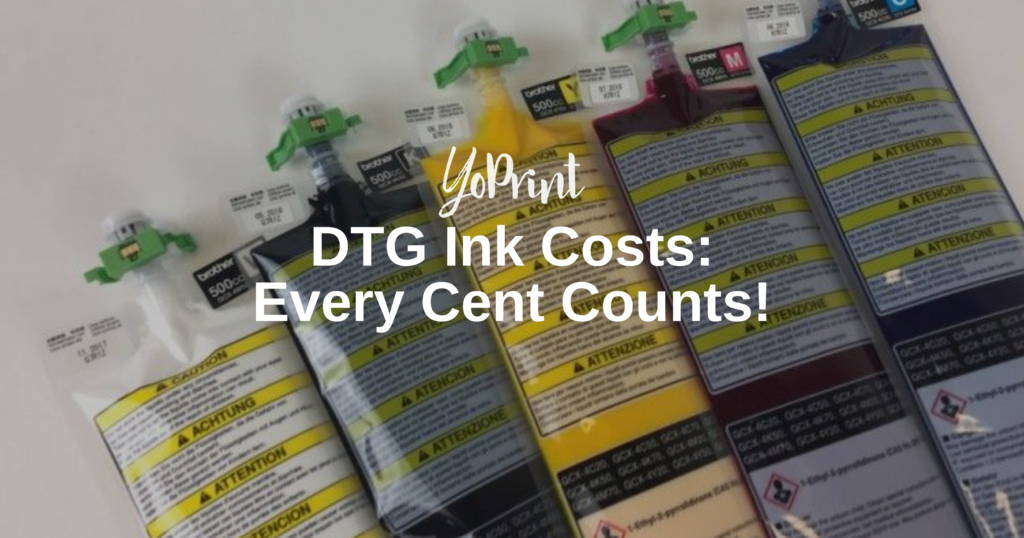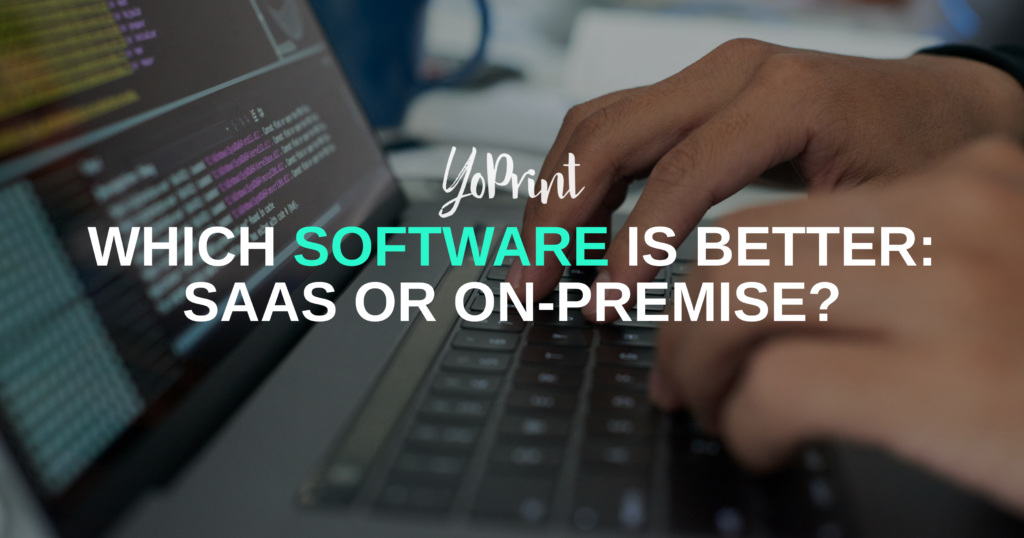Screen printing is an excellent printing method that’s used by various printers over the years. With a long legacy behind it, screen printing is an effective way to print bulk-order garments at a relatively low cost and with great results. Some of your favorite shirt designs were probably made using screen printing.
So what are screen printed transfers? Suppose you’re familiar with heat transfer methods like direct-to-film (DTF) printing. In that case, screen printed transfers are very similar, except that you print the designs via conventional screen printing methods onto a special transfer paper.
The Basics of Screen Printed Transfers
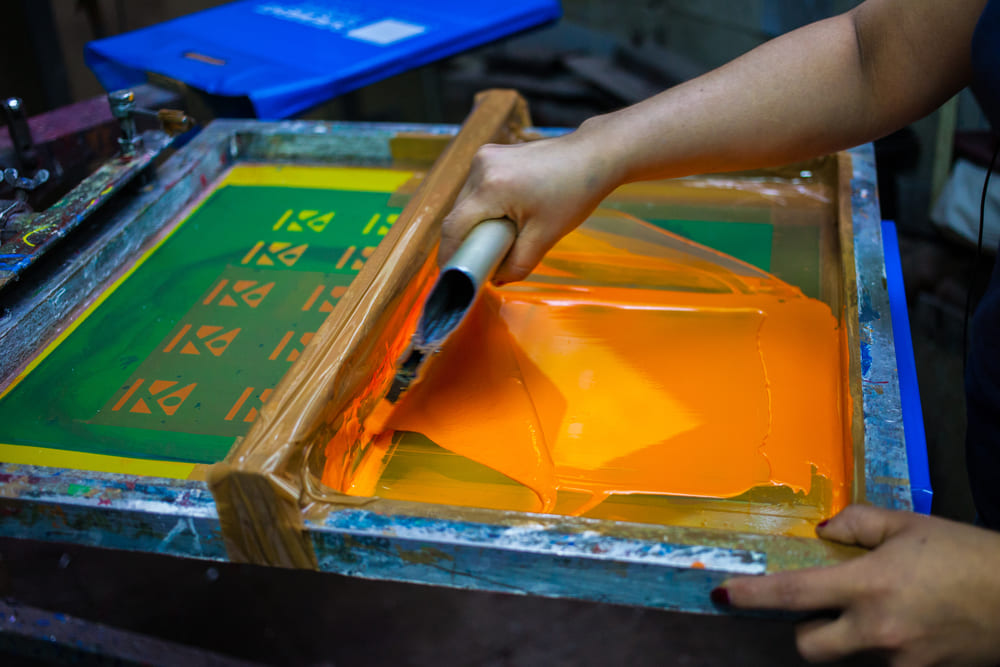
Screen printed transfers are created by screen printing a stenciled design on a mesh screen onto a special transfer (or release) paper; you’re essentially screen printing on paper. Much like DTF’s PET transfer films, you’ll use a heat press to apply the printed design on the transfer paper onto a chosen substrate. Once done, you can peel off the transfer paper to reveal the design underneath, which has now permanently bonded to the substrate’s surface.
Just like with DTF prints, screen printed transfer designs must be printed in reverse onto the transfer paper, as it’ll be in the correct orientation once you apply it to a substrate. You’ll also need to be mindful of the amount of heat and pressure when applying screen printed transfers to a substrate. Values may vary depending on the substrate, the type of transfer paper, or other factors. Some printers pre-heat the transfer paper as they note that it can shrink during the flashing or curing process.
Screen printed transfers are also called plastisol transfers because you’re printing plastisol inks onto the transfer release paper.
How Screen Printed Transfers Work
A regular screen printing setup will be what you need to print your transfers. From there, place the transfer paper onto the printing press and have the mesh screen positioned an eighth or 16th inch off-contact from the paper’s surface. Apply medium pressure with the squeegee at an angle and flood the screen to create the design on the paper.
If you’re adding multiple colors, you’ll need to flash-cure the transfer paper and apply the next layer of ink. Once the final layer is applied, sprinkle the wet inks with adhesive powder to allow the design to adhere to the substrate when the heat press is applied. Note that you can find transfer papers that use an adhesive carrier backing, which means you won’t need any adhesive powder.
Place the transfer paper in a dryer and let it gel cure; be sure not to let it cure at very high temperatures, or it won’t transfer the design to the substrate (keep it below 275 degrees Fahrenheit). Check the quality of the design on the transfer paper before you use it.
To apply the design to a substrate, just place the paper on top of the substrate, then set the heat press to 330 degrees Fahrenheit (values might differ depending on factors like the ink or transfer paper used). Heat press for approximately 10 to 12 seconds; for hot peels, peel the transfer paper moments after pressing to complete the printing process.
The Benefits of Screen Printed Transfers
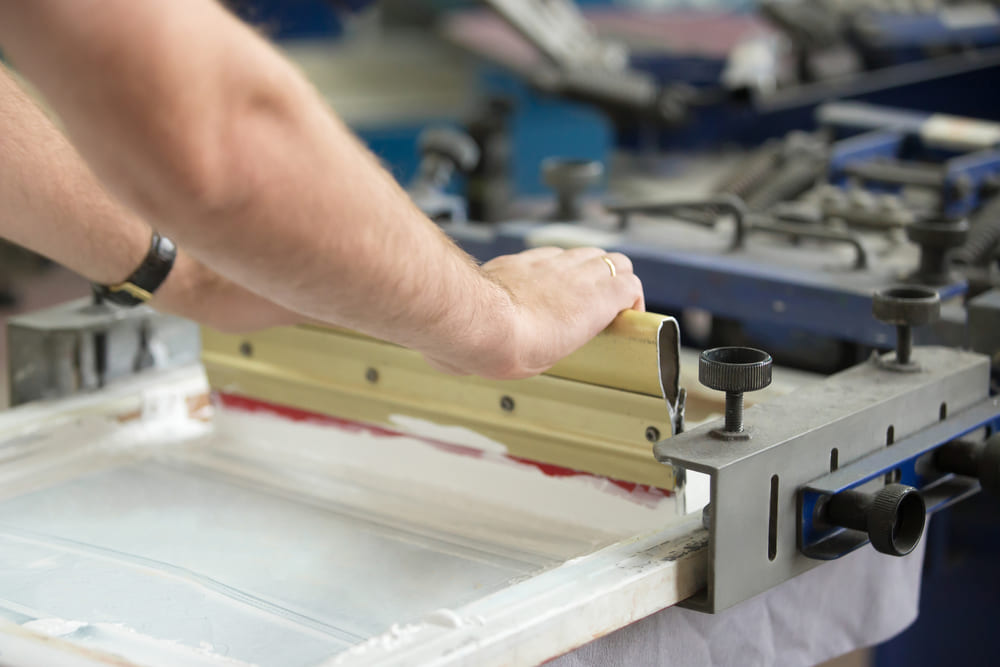
So why would you pick printing screen printed transfers over other heat transfer systems? In fact, why make screen printed transfers when you can directly print onto garments? There are a few advantages that you can gain from screen printed transfers.
Easy storage: Transfer papers come in different sizes, all easily stored in general-purpose files and kept in a secure area. You can have a simple filing system to keep track of all your printed transfers and have them quickly available whenever you need them.
Ideal for brand labels: Since designs of varying sizes can be printed on transfer papers, you can quickly create a large batch of shirt labels pre-printed and used for any new orders you receive. It’s much more convenient than just preparing a dedicated mesh screen for labels.
Repeat orders: If you have regular customers making repeat orders, pre-printed transfer papers can make it much easier to complete them. You’ll be able to use the time you saved to complete other pending orders.
Cost-effective for large orders: Much like regular screen printing, screen printed transfers are also best made in bulk: the more designs your customers order, the more they’ll save on price. The overall setup time and requirements don’t make short print runs an ideal choice, but you could consider printing a large order of prints and then save the unused ones for a repeat order in the future. You can even sell printed transfer papers too!
Versatile applications: As the design is printed onto a transfer paper, you’ll be able to apply the design to a wider variety of products, including baseball caps and even ceramic mugs. This also overcomes screen printing’s main limitation: its finite versatility with cotton substrates or similar blends.
Shares screen printing strengths: On top of that, you’re still getting screen printing’s significant advantages, from impressive Pantone color matching to decent durability and washability.
The Caveats of Screen Printed Transfers
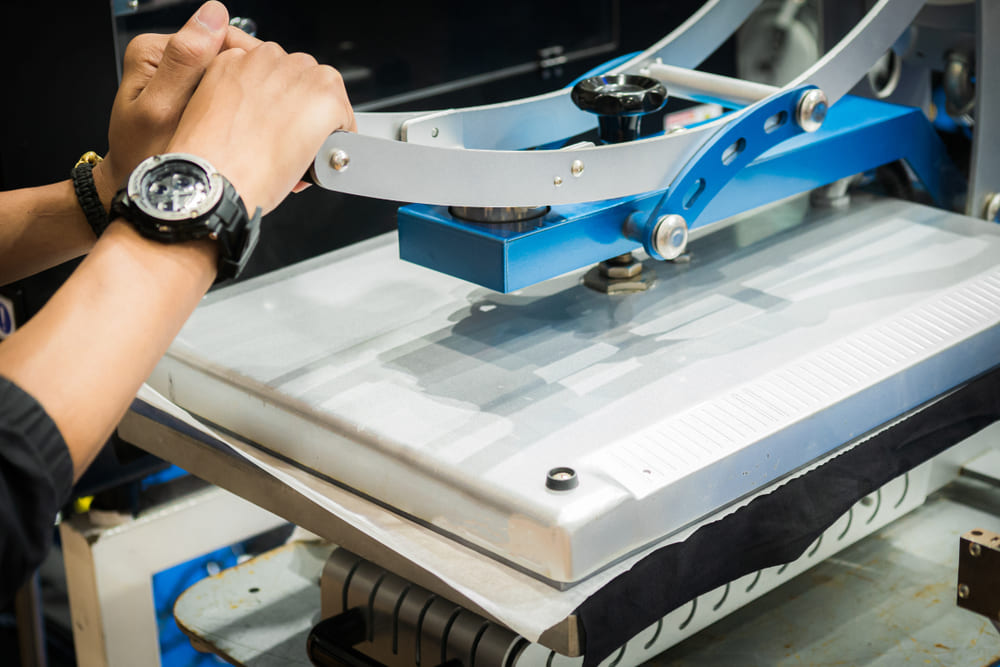
Even with such advantages in its toolkit, it still begs the question: why print on transfer paper when you can print directly onto garments? Who do screen printed transfers cater to?
There might be shops that place orders for screen printed transfers which they use to apply their designs to blanks and sell to customers. This means they don’t need any screen printing equipment in their shop and rely on outsourcing to a contract printer or a company like Transfer Express that makes screen printed transfers (as well as for other types of heat transfer methods). It allows them to reduce overall production costs and sell custom items simultaneously.
Still, if you own a screen printing shop, it makes more sense to screen print directly onto garments than to make screen printed transfers. With most (if not all) screen printers, the heart of their business is printing garments in bulk orders for their many customers. After all, people would much rather wear these custom garments that take the time to use a heat press to do it themselves.
Demand for screen printed transfers is for small-sized quantities for custom garments or non-garment applications. You can make extras and store them for future orders, but you might get different orders from the same customer. And given screen printing is geared towards high-volume production, it’s not viable to print small runs of custom screen printed transfers. Your production cost would exceed the profits you stand to gain, especially for multi-colored designs that require multiple screens for each color.
Other heat transfer systems are much more suited for these small order sizes, particularly DTF printing. DTF printing’s numerous advantages make it a more viable option for custom transfers, especially with its lower startup costs, faster setup times, and decent printing speeds. You don’t need specialized knowledge to start with DTF printing: cheap converted printers are based on desktop inkjet printers, tuned to print on DTF transfer films, and use DTF-tailored CMYK inks. With how easy it is compared to screen printed transfers, it’s no wonder why DTF printing is the more popular option.
Another thing is that, despite the convenience of transfer papers, you’re adding extra time to apply the design from the transfer paper to the garment of your choice. And this doesn’t include the multiple flashes required for multi-colored jobs or the possibility of mistakes being made. Moreover, if you aren’t making screen printed transfers for future orders, is there a worthwhile point to making them in the first place?
So Should You Consider It?
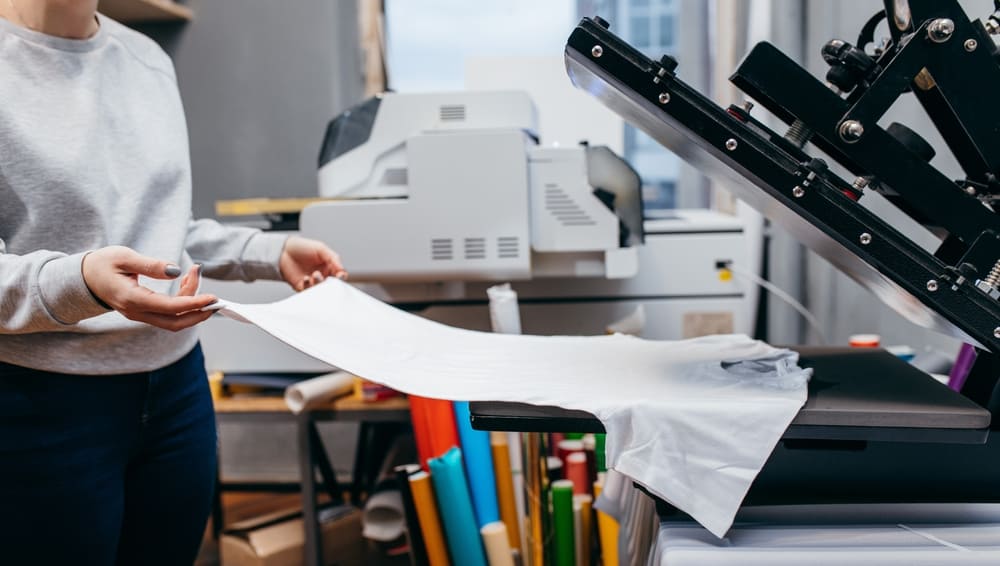
Screen printed transfers are a niche product that still garners some interest, but you should only consider it a side service. If you’re already used to screen printing on garments, and all your orders are for direct printing, then it only makes sense to keep doing what you’re already doing best.
The one advantage screen printed transfers have is their versatility on other types of substrates besides cotton. Since designs are printed onto the transfer paper, you only need to apply sufficient heat and pressure with a heat press to allow it to adhere permanently to the garment’s surface. However, it’s possible to use various techniques to print on traditionally incompatible garments, such as polyester, further making screen printed transfers a somewhat specialized offering.
If you’re still keen on exploring the possibilities of screen printed transfers, but only if you can determine that there may be a demand for it among your clients. Some questions you’ll need to ask yourself include the following:
- What kind of demand will there be for screen printed transfers?
- Will the profits earned exceed the production costs?
- Is it worth the time and effort compared to daily screen printing jobs?
If you still plan to try out small runs with heat transfer printing, consider investing in DTF printing equipment instead. You’d get more utility, faster turnaround times, and good results at a much lower investment cost (as well as overheads, too).
Conclusion
While screen printed transfers have advantages, their relative niche in screen printing makes them much less appealing as a standalone printing service. Screen printing’s high-volume print capacity is at loggerheads with screen printed transfers’ relatively small print sizes, making it hard to reconcile the long-term profitability of the latter with how you’ve implemented your screen printing setup.
However, should there be some demand for it, screen printed transfers are a worthwhile consideration as a side service you can offer customers. You could cater to customers who want to apply for transfers themselves or apparel shops selling custom garments without using any screen printing equipment.
